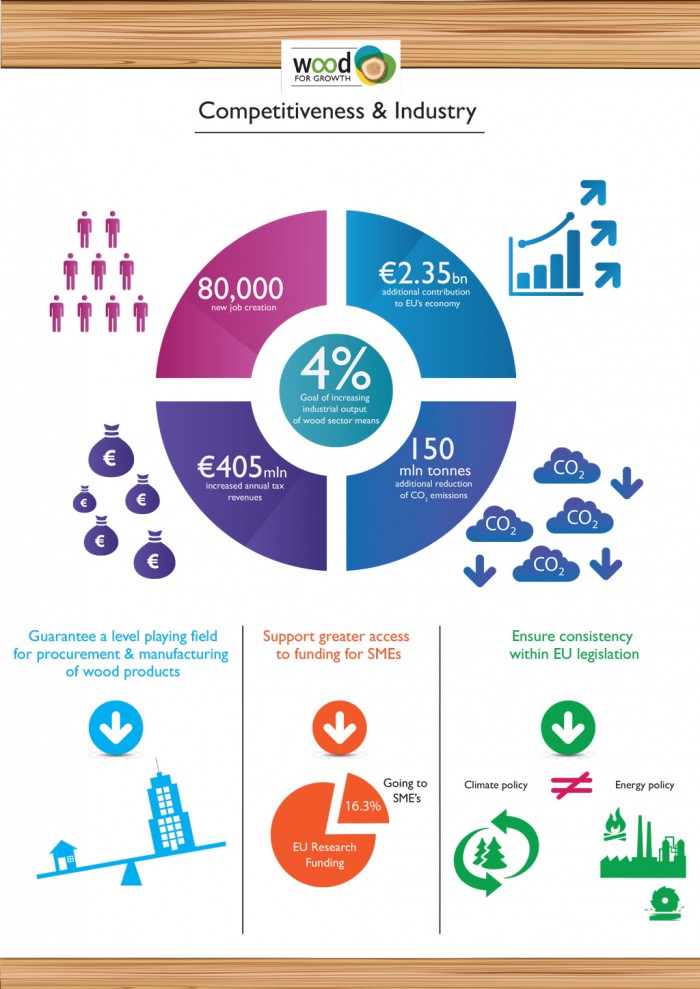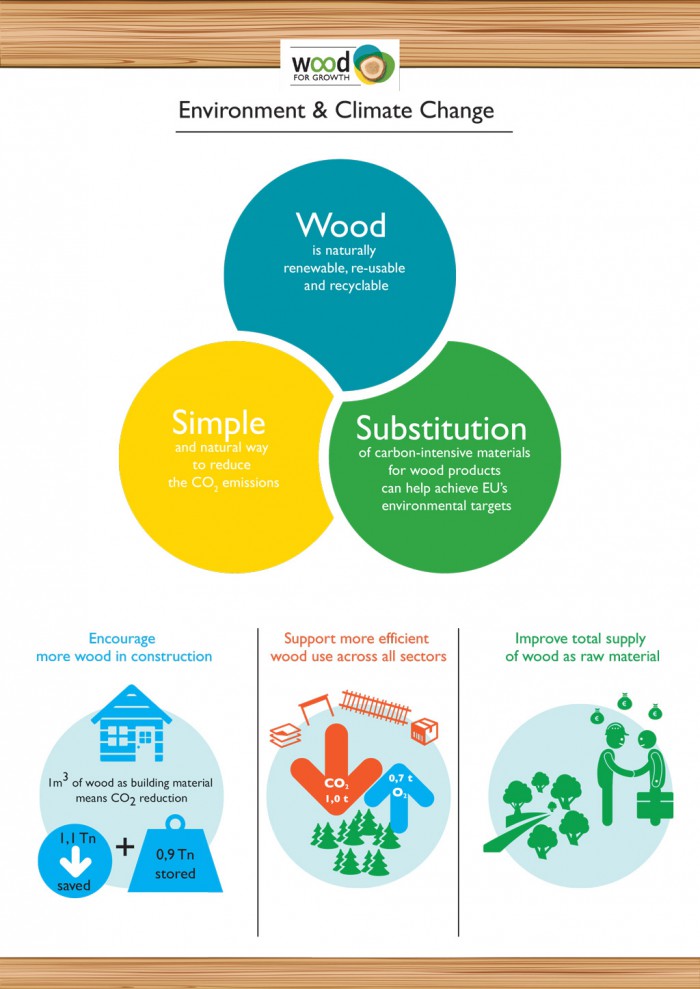Industry significance
A driving force of the global economy
The woodworking industry is a major employer in many of the Member States of the European Union and features among the top 3 industries in Austria, Finland, Portugal and Sweden.
A provider of welfare in Europe
In 2009, the woodworking industry provided jobs to nearly 2.4 million people in the EU 27. In common with all traditional industries, it plays an important part in achieving the EU goal of becoming the world’s most competitive region.
A contributor to rural development
Firms are often located in remote, less industrialized or developed areas, making an important contribution to the rural economy.
A diversified industry
The industry covers a wide range of activities, from sawmilling, planing and pressure treating to the production of wood-based panels, veneer and boards; from construction products to joinery; from pallets and packaging to furniture.
An industry of Small and Medium-sized Enterprises (SME)
The companies within the woodworking industries are mostly SMEs, with only a few large groups, typically in the softwood sawmill, panel and parquet sectors, operating on a European or global scale. The total number of businesses in the EU 27 wood industry was estimated at 365 000 in 2009, of which 100 000 in the furniture industry.
Wood products
Sawnwood
The sawnwood sub-sector represents 15% of the overall EU 27 woodworking industry, producing around 1110 million m3 (€26 000 million) every year from 34 000 companies, employing 268 000 people.
Softwood timber consumption

Sawnwood products are used mainly in industrial and structural applications, such as building components (timber frames, flooring, decking, joinery, etc.), and in domestic applications for panelling, built-in fixtures, furniture and finishing.
Wood-based panels
This sub-sector accounts for €20 billion of total industry production, employing around 100 000 people within the EU.

Wood-based panels are used as intermediate products in a wide variety of applications in the furniture industry, the building industry (including flooring), the packaging industry, or as ‘do-it-yourself’ products.
The most important end-users for plywood and OSB are the construction market and the packaging industry, although plywood also enjoys specific niche markets such as transport, boat building and musical instruments.
The furniture industry is the main user of particleboard (70%), while laminate flooring is a booming market for MDF and now accounts for more than 35% of all applications. Laminate flooring has been the fastest growing product in the woodworking industry in the past years.





